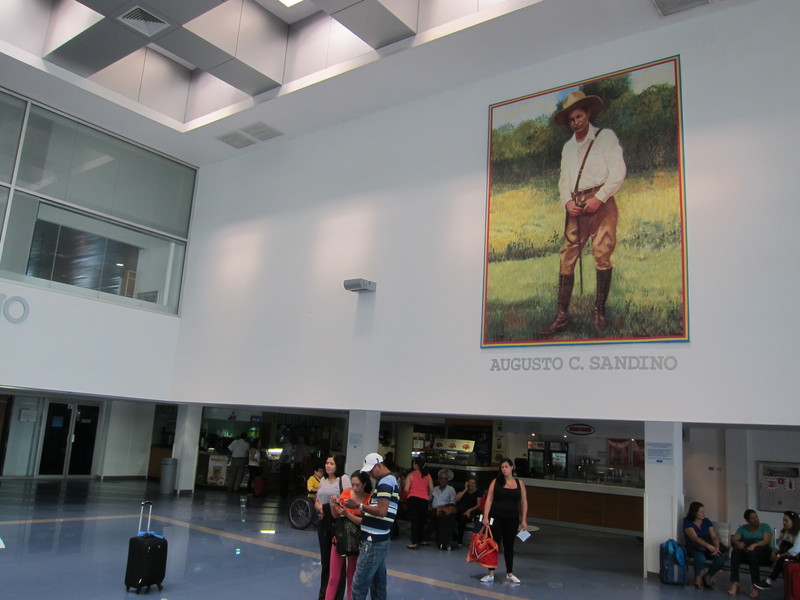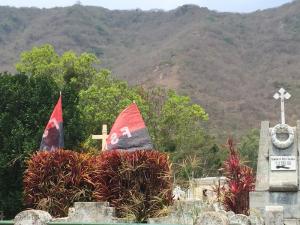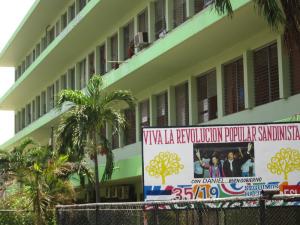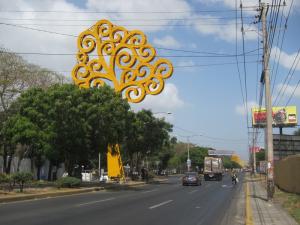More glimpses of Nicaragua: Sandanista politics
The long-legged politics of Augusto Caesaro Sandino - the early 20th-century revolutionary whose passion for his nation and its native peoples continues to inspire - are evident everywhere in the country. The colors of the Sandanista party are black and red. Bus stops are painted in black and red, the sides of buildings, lamp posts, curbs along streets, even in the graveyards the black and red flags fly above the final resting places of party loyalists. One guide told us that of 153 formal municipalities in Nicaragua, 150 of them are controlled by Sandanistas. My sense is that the government, led by President Daniel Ortega, is primarily a social democracy trying to better the lives of the vast majority of the mostly poor, indigenous, Hispanic, and mixed indigenous and Hispanic people.
Ortega's overwhelming Sandanista majority made it relatively easy for him to have the nation's constitution changed so that he can serve as many terms as he can be elected to.
Ortega courts money from around the world to help his people. We saw evidence of Venezuelan influence along the PanAmerican Highway as it makes its way through the center of teeming Managua - Nicaragua's capitol city. We saw highways being built with Japanese aid and there was talk everywhere of the new Chinese-financed canal proposed for crossing Nicaragua and competing with the Panama Canal. While there's no question the canal would bring great money to the country, there are great environmental concerns, particularly about the effect the massive project would have on Lake Nicaragua - which the canal would cross - and the two-volcano-island of Ometeppe in the lake. Lake Nicaragua is the world's tenth largest freshwater lake and lies in the center of the nation, between the Atlantic and Pacific oceans which the proposed canal would connect. The proposed canal route lies along the route used by people to make their way from the east coast of the US to the west coast during the gold rush of the mid-1800s.
The politics of Nicaragua - like its people and its diverse environment - are nothing short of dynamic.
















































